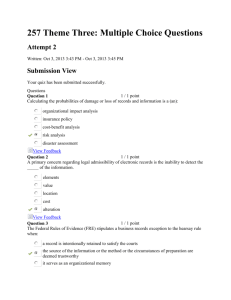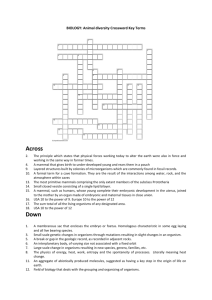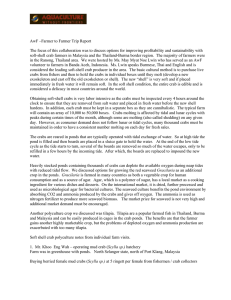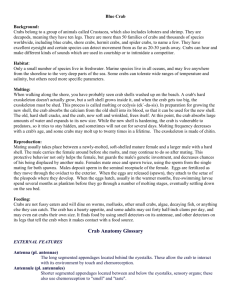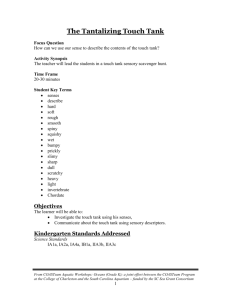vs_spotdifference_110409
advertisement
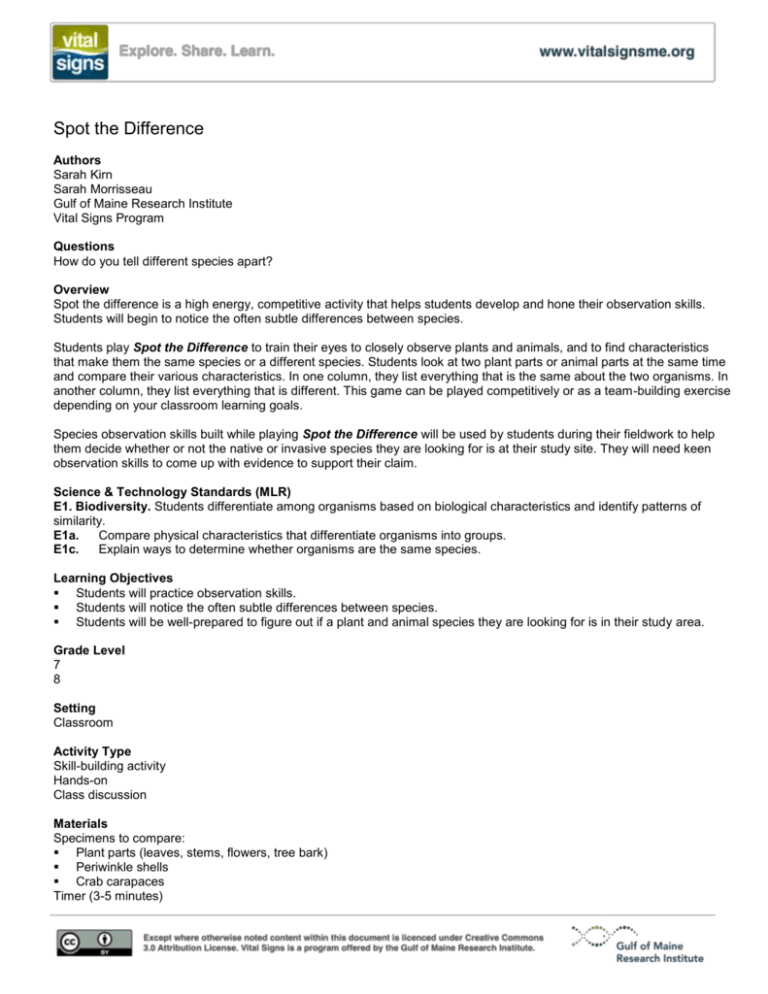
Spot the Difference Authors Sarah Kirn Sarah Morrisseau Gulf of Maine Research Institute Vital Signs Program Questions How do you tell different species apart? Overview Spot the difference is a high energy, competitive activity that helps students develop and hone their observation skills. Students will begin to notice the often subtle differences between species. Students play Spot the Difference to train their eyes to closely observe plants and animals, and to find characteristics that make them the same species or a different species. Students look at two plant parts or animal parts at the same time and compare their various characteristics. In one column, they list everything that is the same about the two organisms. In another column, they list everything that is different. This game can be played competitively or as a team-building exercise depending on your classroom learning goals. Species observation skills built while playing Spot the Difference will be used by students during their fieldwork to help them decide whether or not the native or invasive species they are looking for is at their study site. They will need keen observation skills to come up with evidence to support their claim. Science & Technology Standards (MLR) E1. Biodiversity. Students differentiate among organisms based on biological characteristics and identify patterns of similarity. E1a. Compare physical characteristics that differentiate organisms into groups. E1c. Explain ways to determine whether organisms are the same species. Learning Objectives Students will practice observation skills. Students will notice the often subtle differences between species. Students will be well-prepared to figure out if a plant and animal species they are looking for is in their study area. Grade Level 7 8 Setting Classroom Activity Type Skill-building activity Hands-on Class discussion Materials Specimens to compare: Plant parts (leaves, stems, flowers, tree bark) Periwinkle shells Crab carapaces Timer (3-5 minutes) Worksheet with 2 columns, one labeled “Same” and the other labeled “Different” Vital Signs species identification cards Metric rulers Time Needed 20 minutes Activity Procedure Collect specimens (at least 2 species to compare per pair/team of students). If you would like plant parts to endure more than one use, consider pressing them first, mounting them on cardstock, and then laminating. Competitive version 1. Pair students up. Have each student pick a similar species (i.e., both pick a leaf or both pick a crab shell, etc.). 2. Start the timer. 3. Ask each student to write down in their table all of the differences and similarities they see between their own pick and their partner’s pick. SAME DIFFERENT 4. Stop the timer after 3-5 minutes of observation. 5. Award points 1 point for every characteristic that you have, but that your partner does not have No points for a characteristic that both you and your partner have 6. Ask the pair to work together to make a claim about whether they think that these are the same species or different species based on their observation results. Vital Signs species cards version 1. Download species cards from the Vital Signs website. 2. Have students use the diagram on the card to introduce new vocabulary and improve lists. 3. Challenge students to pull out a fancy science term before their partner does. Reflective version 1. In small groups (up to 4), have each student pick out a similar species (i.e., all pick a leaf or all pick a crab shell). 2. Together the small groups write down the similarities and differences among the species. Version to get at individual variation within a species 1. Collect multiple examples of several species (crab carapaces, leaves from the same plant or tree that are of different sizes, etc.) 2. Begin the activity by asking groups sort the big pile of material into species groups (all Jonah crabs, all green crabs, all sugar maple, all Norway maple, etc. Note that you don’t have to know the name of the species to do this exercise, especially if you collect leaves from different trees). 3. Proceed with having participants describe the characteristics of each pile of specimens of the same species. Reflection or Formative Assessment Ideas 1. Write on the board the following categories: Color, Shape, Size, Texture 2. Ask students to look at their same/different lists, and to put a checkmark underneath the categories that they used when comparing species. 3. Are there categories missing that anyone would like to add? How many used these other categories? 4. Discuss the most popular categories. Were they the most reliable? Are these the characteristics you would definitely use again next time? Extension Ideas Have an idea for how to enhance and extend this lesson? Share it with us in the comments section for this lesson plan in the Vital Signs Open Resource Exchange.

